American furniture styles: a visual chronology
Florida Antiques Appraisers provides appraisals of American antique furniture. Please contact us for more information.The earliest English settlers arrived in Virginia back in the 1600s. As they settled into their new homes, craftsman began to produce furniture largely reminiscent of what they had left behind back in England; Large, bold furniture pieces created in the Elizabethan and Jacobean styles, that served functional purposes. Jacobean pieces are known for their heavy and rather angular look.

Jacobean Style Chair
Come the turn of the century, in 1700, the furniture style in America began to alter a bit as French style exerted its influence, in part due to their increased presence in North America. This is known as the William and Mary Style, and it showed a greater interest in color, texture and pattern.
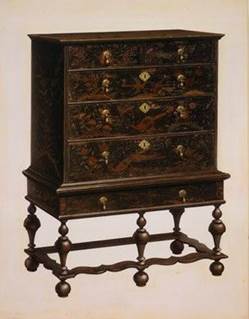
William and Mary Style Dresser
However, by around 1725, the Queen Anne style began to emerge out of Boston. While Queen Anne had ruled England a decade before, her style took a bit longer to travel across the pond. Affluent colonist began opting for the Queen Anne style of graceful S curves, scroll pediments and carved shells forms.

Queen Anne Style Desk
However, as the American Revolution loomed, the Chippendale style took popular hold, borrowing motifs from Gothic, Chinese and French sources.

American Chippendale Style High Boy
In the aftermath of the revolution came the early Federal Style, which had a more Neoclassical sensibility; Neoclassical being know for its clean and crisp lines, its harmonious regularity and decorative restraint, though it did often incorporate classical motifs.
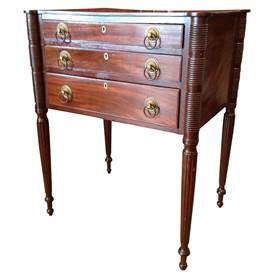
Early Federal Style Side Table
The Late Federal style of the early 1800s reverted even further into the Classical past. The idea was to impart a sense of Imperial grandeur in massive forms with plenty of gilding and a wide range of classical motifs, from palmettes to lion’s heads. In New York, Duncan Phyfe made his mark during this time.
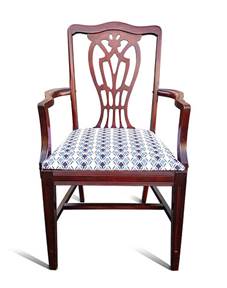
Late Federal style Duncan Phyfe Chair
Than began a whole series of Revival styles, starting with Gothic and Elizabethan (1830-1865). Gothic Revival leaned heavily on the idea of tracery and pointed lancet arches, while Elizabethan was plainer often created for the middle classes.
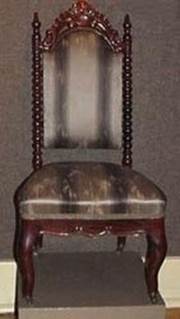
Elizabethan Revival Chair

Gothic Revival Table
Than came the Rococo Revival (1840-1870). Its excessive nature rivaled and even outpaced the original style, with carving being abundant and intricate.

Rococo Revival ´Etrager
And from there to the Neo-Grec Style, and the Renaissance and Egyptian Revival styles (1860-1885). The Renaissance Revival style placed great emphasis on massive ornament, often containing human or animal figures. This influenced the Neo-Grec style which appropriated the aforementioned features, but paired them with straight lines. Sphinx heads, lotus capitals and animal feet are common motifs found in Egyptian Revival.

Neo-Grec Cabinet
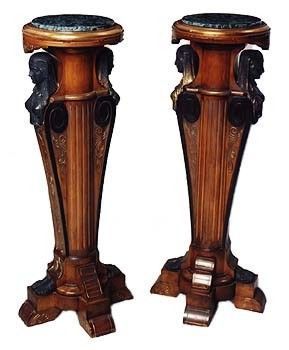
Egyptian Revival Plinths
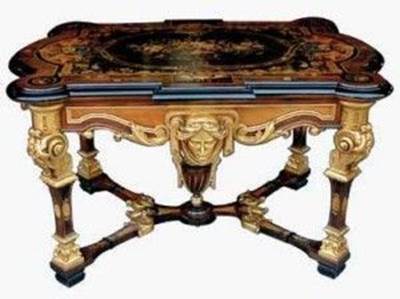
Renaissance Revival Table
Turkish taste furniture also gained popularity in the late 1800s. This style tends to emphasize fine and heavy fabrics, such as velvet and brocade, and the use of fringe.

Turkish Taste Settee
The Aesthetic Movement(1870-1915) espoused a sort of “art for art’s sake” sentiment, while also believing that art should be enjoyed by all. It was influenced by the recent contact with Japan that inspired many European artists, and eventually made its way to the United States. This Japonisme can me seen in the decorative motifs used, such as birds and feathers.

Eastlake Furniture, so named because of its founder Charles Locke Eastlake, had its heyday from around 1870 to 1890. It was in part a reaction to the more flamboyant of Rococo and Renaissance styles, with the carving often being incised as opposed to done high relief.

Eastlake Table